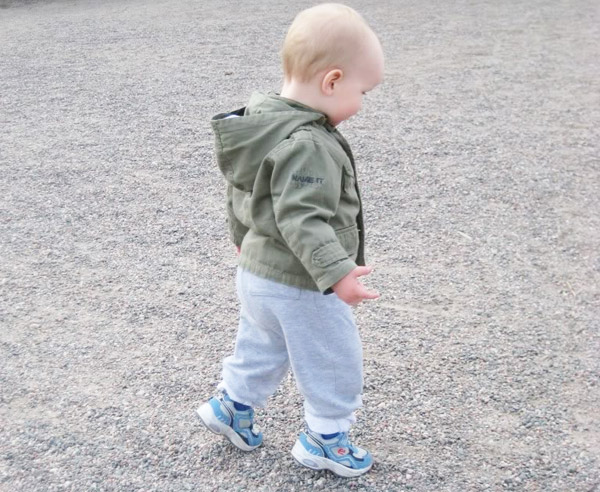 When a toddler takes their first steps we observe an uncertain sway in their walking. Being unsteady on our feet is something we can experience throughout life — and a new study has shown how even the lightest fingertip touch can help people to maintain their balance.
When a toddler takes their first steps we observe an uncertain sway in their walking. Being unsteady on our feet is something we can experience throughout life — and a new study has shown how even the lightest fingertip touch can help people to maintain their balance.
The research, led by the University of Birmingham, explains how neural and mechanical mechanisms synchronize our sway with another person.
Dr Raymond Reynolds explained, “There’s something very human, very instinctive, that makes us reach out and grab something or someone when we’re unsure of our balance and experience sway. We know this. But being able to significantly reduce that sway with even the gentlest touch tells us a lot about how our body relates to the people around us.”
The team looked at pairs of volunteers in a range of tests to understand how visual and mechanical interactions between them would affect their stability.
Participants stood on force platforms while undertaking a range of tests; with no physical contact, a shoulder grasp and a light touch. For each level of contact, the visual interactions also were varied to study both with closed eyes, both with open eyes, and with one participant closed/one participant open.
As expected, the volunteers experienced a 37% reduction in sway when grasping each others’ shoulders. Even a non-forceful touch with the fingertip accounted for an 18% reduction in sway, and it is the underlying mechanisms behind this that the team have described for the first time.
Dr Reynolds continued, “Grabbing the shoulder of someone to reduce sway can be explained entirely by the mechanical linkage between the two. But this light touch of the finger is down to a sensory weighting phenomenon by which we balance ourselves.”
The phenomenon in question describes how each person essentially estimates how ‘upright’ they are, based on a weighted combination of sensory feedback from themselves (eg the inner ear, the sense of force underfoot, and vision) and feedback based upon the motion of their partner.
Dr Reynolds added, “When Person A has their eyes open, and Person B has their eyes closed, and they apply the slightest fingertip contact we see Person B experience a reduction in sway. Surprisingly, Person A also experiences a reduction in sway — it’s quite literally a case of the blind leading the sighted.”
The study, published today in Interface, also pointed toward an unexpected finding; that we are able to obtain this benefit from someone with equal or even greater instability than ourselves.
Dr Callum Osler, from the University of Derby, said, “It’s a fascinating twist, and somewhat counter-intuitive. Of course there is a threshold — we wouldn’t be able to reduce our sway via contact with someone on the verge of falling over. But to a point we can become more stable through contact with someone experiencing more sway than ourselves.”
It is hoped that the findings could be beneficial for rehabilitation or for vulnerable populations by develop the smarter walking aids of the future. The study done by University of Birmingham.